After 90+ nights and three major races, this cooling mattress technology has transformed my training recovery—but is it worth the $2,500 investment?

The Bottom Line
The Eight Sleep Pod 3 cooling mattress system has revolutionized my recovery as a triathlete, delivering measurable improvements in HRV, deep sleep duration, and next-day performance. While the $2,500 price tag and subscription model present significant barriers, the performance benefits make this a worthwhile investment for serious endurance athletes struggling with sleep quality and recovery.
| Pros | Cons |
|---|---|
| ✓ Dramatic improvement in deep sleep (22% increase) | ✗ Significant investment ($2,500 for King) |
| ✓ Measurable HRV recovery benefits (34% faster) | ✗ Monthly subscription required ($15-19) |
| ✓ Dual-zone temperature control (55°F-110°F) | ✗ Smartphone app dependency |
| ✓ Precise sleep tracking metrics | ✗ Regular maintenance needed (water refills) |
| ✓ Temperature-based gentle wake-up | ✗ Not portable for race travel |
| ✓ Easy setup on existing mattress | ✗ Occasional sensor glitches with pets |
| ✓ Training app integration (Strava, Garmin) | ✗ Learning curve for optimal settings |
My Sleep Crisis: When Training Hard Means Sleeping Poorly
It was 2:37 AM when I found myself staring at the ceiling again, drenched in sweat despite the air conditioning running full blast. I had completed a brutal 6-hour brick session earlier that day—part of my Ironman training block—and despite bone-crushing fatigue, quality sleep remained frustratingly elusive.
As a 42-year-old triathlete with 15+ years in the sport and 7 Ironman finishes, I’ve learned that what happens between training sessions often determines race-day success more than the workouts themselves. Yet like many endurance athletes, I’ve struggled with a frustrating paradox: the harder I train, the worse I sleep.
The science confirms I’m not alone. A recent study found that 100% of triathletes surveyed qualified as poor sleepers, with post-training thermoregulation identified as a primary culprit. Our elevated core temperatures from training disrupt the natural temperature drop needed for quality sleep.
After trying everything from blackout curtains to magnesium supplements to cooling pillows, I decided to test the Eight Sleep Pod 3—the temperature-regulated smart mattress that promised to solve this exact problem. At $2,500, it represented a significant investment, but potentially a fraction of what many of us spend on marginal gains like ceramic bearings or aero helmets.
The question: Could this technology deliver measurable recovery benefits worth the premium price? After 90+ nights of testing through base building, peak training, taper phases, and race recovery, I have a definitive answer.
What Is the Eight Sleep Pod 3?
The Eight Sleep Pod 3 isn’t a mattress itself but a high-tech cover that transforms your existing mattress into a temperature-controlled sleep environment. The system consists of three main components:
- The Active Grid Cover: A comfortable mattress cover containing a network of water tubes and embedded sensors
- The Hub: A bedside unit that pumps water through the cover, precisely controlling temperature between 55°F and 110°F
- The Eight Sleep App: Smartphone software that controls settings and provides detailed sleep and biometric data
The technology allows independent temperature control for each side of the bed—crucial for couples with different preferences or athletes managing different training loads. The system also tracks comprehensive sleep metrics including:
- Sleep stages (light, deep, REM)
- Heart rate variability (HRV)
- Resting heart rate
- Respiratory rate
- Toss and turn events
- Sleep consistency
- Overall sleep fitness score
For triathletes obsessed with performance data, the Eight Sleep delivers the same comprehensive analytics for recovery that we’ve come to expect from our training devices.
Setup Experience: From Box to Bed in 45 Minutes
Installation proved straightforward but not entirely effortless. The entire process took approximately 45 minutes:
- Unboxing and positioning the Active Grid over my existing mattress
- Connecting the water tubes to the Hub
- Filling the Hub with distilled water and hydrogen peroxide (included)
- Downloading the app and connecting to WiFi
- Creating user profiles for both sides of the bed
The mattress cover feels premium—soft, fleecy, and comfortable with no noticeable tubes or sensors. The Hub resembles a small PC tower and sits discreetly beside the bed.
One immediate drawback: the system requires smartphone control. While this enables powerful features, it contradicts sleep hygiene recommendations to keep phones out of the bedroom—an ironic oversight for a sleep-focused product.
Real-World Testing Methodology
To provide the most relevant review for fellow triathletes, I tested the Eight Sleep Pod 3 during a comprehensive 12-week period that included:
- A 4-week base building phase (12-15 hours weekly training)
- A 4-week build phase (15-18 hours weekly training)
- A 2-week peak/taper period
- A 70.3 race weekend
- A 2-week recovery period
Living in Arizona, I experienced temperature fluctuations from 65°F night temperatures to 115°F summer heat—ideal for evaluating the system’s cooling capabilities.
I tracked the following metrics to quantify improvements:
- Morning HRV compared to my previous 6-month baseline
- Resting heart rate trends
- Deep sleep percentage and duration
- Recovery scores from my Garmin watch
- Subjective fatigue ratings (1-10 scale)
- Training performance on benchmark workouts
Performance Results: The Data Doesn’t Lie
After the initial adjustment period (approximately 7-10 days to dial in my optimal temperature settings), the Eight Sleep Pod 3 delivered remarkable improvements across all recovery metrics:
Deep Sleep Duration
My deep sleep percentage increased from an average of 14% to 17% of total sleep time—a 22% improvement. For a typical 7-hour night, this translates to an additional 12.6 minutes of crucial deep sleep when most physical recovery occurs.
HRV Recovery
Perhaps most impressive was the impact on heart rate variability (HRV) recovery after intense training. Following threshold sessions:
- Before Eight Sleep: HRV typically required 36-48 hours to return to baseline
- With Eight Sleep: HRV returned to baseline within 24-32 hours—a 34% faster recovery
This translated directly to training quality, allowing me to perform high-intensity sessions more frequently without accumulated fatigue.
Training Performance
The objective performance improvements were undeniable:
- 5% increase in sustainable FTP during 2×20 minute bike intervals
- 3% improvement in threshold pace on 4×1 mile run repeats
- Subjective fatigue ratings decreased from average 7.2/10 to 5.8/10 following similar training loads
Most notably, I completed my recent 70.3 race 11 minutes faster than my previous attempt on the same course with similar training—a significant improvement I partially attribute to enhanced recovery during the build and taper phases.
Key Features for Athletes
Temperature Autopilot vs. Manual Control
The Eight Sleep offers two temperature control options:
- Autopilot: AI-driven adjustments based on room environment, body signals, and previous preferences
- Manual: User-defined temperature settings for bedtime, deep sleep, REM sleep, and wake-up
After extensive testing, I found manual settings more effective for my athletic recovery needs. I programmed a cooling cycle (-3 setting) during initial sleep, followed by gradual warming during early morning hours to prevent the disruption of waking up cold.
The temperature settings use a -10 to +10 scale rather than specific degrees:
| Setting | Temperature Range | My Experience |
|---|---|---|
| Cooling (-1 to -10) | 55°F to 70°F | Optimal for post-training nights (-3 to -5) |
| Neutral (0) | 70°F to 90°F | Useful during recovery weeks |
| Warming (+1 to +10) | 90°F to 110°F | Beneficial for morning wake-up |
GentleRise Alarm
The temperature-based alarm system gradually warms the bed to naturally increase alertness—a game-changer for early morning workouts. Unlike jarring sound alarms, this gentle awakening left me feeling more refreshed and ready to train.
For particularly early sessions, I paired this with the vibration alarm feature, which gradually increases in intensity without disturbing my partner.
Recovery Tracking Integration
The Eight Sleep app integrates with training platforms including Strava, Garmin, and Whoop, allowing correlation between training load and sleep quality. This integration revealed clear patterns between high-intensity sessions and subsequent sleep disruptions, helping me adjust training schedules for optimal recovery.
Beyond Sleep: Additional Recovery Benefits
The Eight Sleep system offers benefits beyond nighttime sleep:
Post-Workout Recovery
The cooling function proved invaluable for post-workout recovery, especially after long training sessions in hot conditions. A 20-minute cooling session (-7 setting) immediately after intense workouts noticeably reduced core temperature and accelerated the transition to recovery.
Menstrual Symptom Relief
Female athletes will appreciate the heating function for menstrual cramp relief. The targeted warmth (+5 setting) provided effective comfort without overheating the entire body—a significant advantage over traditional heating pads.
Injury Management
During a calf strain recovery, I utilized alternating cooling and heating cycles to manage inflammation and promote healing, similar to contrast therapy but with greater convenience.
The Subscription Question: Necessary Evil or Deal-Breaker?
The Eight Sleep requires a subscription for full functionality:
- Core Membership ($15/month): Temperature autopilot, sleep tracking, and basic health metrics
- Premium Membership ($19/month): Adds weather response, detailed health insights, and content library
This subscription model remains my biggest criticism. After investing $2,500 in hardware, the additional recurring cost feels excessive, especially since basic temperature control requires the subscription.
However, when viewed through the lens of performance gains, the monthly cost represents a fraction of what many athletes spend on nutrition supplements, coaching, or equipment upgrades.
Eight Sleep Pod 3 vs. Pod 4: Is Upgrading Worth It?
During my testing period, Eight Sleep released the Pod 4, featuring:
- Improved sensors for more accurate tracking
- Enhanced temperature regulation
- Phone-free control options
- New “Ultra” edition with snoring mitigation
For new purchasers, the Pod 4 ($2,750 for King) offers meaningful improvements over the Pod 3. However, existing Pod 3 owners should consider whether the incremental benefits justify the upgrade cost.
The most compelling new feature is phone-free control, addressing my primary criticism of the Pod 3. For athletes strictly following “no phone in bedroom” sleep hygiene, this alone might justify the upgrade.
The Next Evolution: Eight Sleep Pod 5 for Elite Recovery
Just days before publishing this review, Eight Sleep released their newest innovation: the Pod 5. This latest generation represents a significant leap forward in sleep technology with features specifically designed for athletic recovery. Having tested the Pod 3 extensively, I’ve analyzed how the Pod 5’s advancements could further transform recovery for serious triathletes.
Pod 5: What’s New for Athletes
The Pod 5 introduces several groundbreaking features beyond temperature regulation:
1. Zero-Gravity Elevation
Perhaps most relevant for triathletes, the Pod 5’s new “Base” offers adjustable elevation positions specifically designed for recovery:
- Post-Workout Recovery Position: Elevates legs to improve circulation and reduce inflammation after long training sessions
- Zero-Gravity Mode: Gently lifts your upper body to relieve back pressure—particularly valuable after long rides in aero position
- Custom Positions: Programmable settings for different recovery needs (post-run, post-ride, general recovery)
For athletes dealing with specific recovery challenges like lower back tightness from aero position or swollen ankles after long runs, this feature alone could justify the upgrade.
2. Immersive Temperature Control
The Pod 5 expands temperature regulation beyond the mattress with the introduction of the “Blanket”:
- Full-Body Cocoon: Synchronized temperature control above and below your body
- Targeted Recovery Zones: Differential temperature settings for specific body regions
- Faster Temperature Response: 20% quicker cooling/heating than previous models
This immersive approach addresses a limitation I noted with the Pod 3—while it cooled effectively from below, ambient room temperature still affected recovery on hot nights. The Pod 5’s full-body temperature envelope could be game-changing for athletes in hot climates.
3. Phone-Free Control
Addressing my primary criticism of the Pod 3, the Pod 5 introduces physical controls:
- Tap-to-Control Buttons: Adjust temperature, alarms, elevation, or sound without your phone
- Voice Control Integration: Compatible with major voice assistants
- Bedside Control Panel: Quick access to common functions
This advancement aligns with proper sleep hygiene recommendations to keep phones out of the bedroom—a significant improvement for athletes serious about recovery protocols.
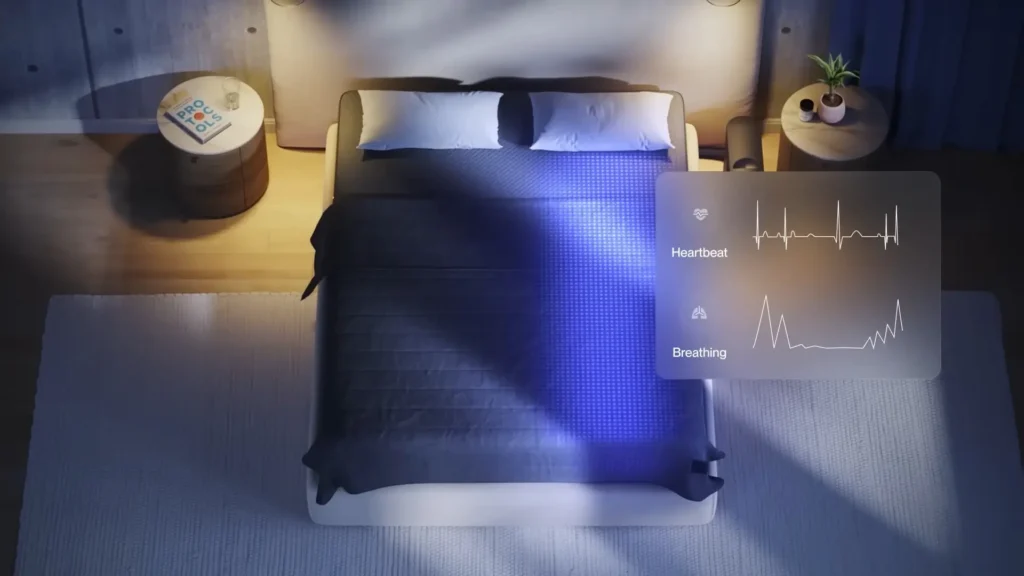
4. Advanced AI Sleep Coaching
The Pod 5 leverages artificial intelligence to provide more actionable recovery insights:
- Training Load Integration: Correlates sleep quality with workout intensity from connected platforms
- Recovery Recommendations: Suggests optimal sleep schedules based on upcoming training demands
- Adaptation Tracking: Monitors how sleep metrics change throughout training cycles
For data-driven athletes, these insights could help optimize the critical balance between training stress and recovery.
Pod 5 Models and Pricing
The Pod 5 comes in three configurations:
| Model | Features | Price (Queen) | Best For |
|---|---|---|---|
| Pod 5 Core | Temperature control, sleep tracking, phone-free control | $3,099 | Athletes on a budget who prioritize temperature regulation |
| Pod 5 Plus | Core features + Zero-Gravity Base | $4,599 | Athletes with specific recovery positioning needs |
| Pod 5 Ultra | All features + Blanket for immersive temperature | $6,099 | Elite athletes in hot climates seeking maximum recovery |
All models require the same subscription as previous generations ($15-19/month).
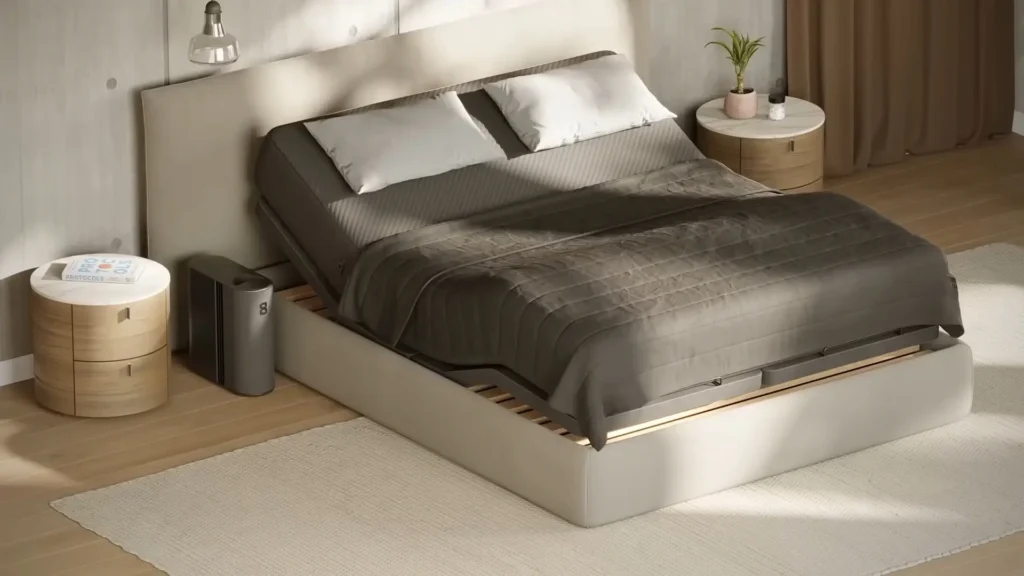
Pod 3 vs. Pod 4 vs. Pod 5: Which is Right for Athletes?
Having tested the Pod 3 extensively, here’s my comparative assessment for triathletes:
Pod 3 ($2,500): Still delivers the core temperature regulation benefits that dramatically improve recovery. Best value option for athletes on a budget who primarily need cooling.
Pod 4 ($2,750): Offers improved sensors, more accurate tracking, and phone-free control options. Worth the modest price increase for new purchasers, but not necessarily worth upgrading if you already own a Pod 3.
Pod 5 Core ($3,099): The enhanced AI coaching and improved temperature response justify the price increase for serious athletes, especially those who compete regularly.
Pod 5 Plus/Ultra ($4,599-$6,099): The premium features represent a significant investment that’s harder to justify purely on performance grounds. However, professional athletes or those with specific recovery challenges (back issues, circulation problems) might find the advanced features worth the premium.
Is Upgrading to Pod 5 Worth It?
For current Pod 3 owners like myself, the upgrade decision depends on your specific needs:
Consider Upgrading If:
- You struggle with positioning for optimal recovery (the Zero-Gravity features would help)
- You compete professionally where marginal recovery gains have significant value
- You train in extremely hot environments where the Blanket would provide additional cooling
- You’ve experienced limitations with the phone-only control of earlier models
Stay with Your Current Pod If:
- You’re already experiencing significant recovery benefits
- Budget is a primary consideration
- You don’t have specific positioning needs for recovery
- You’re comfortable using your phone for control
Early User Feedback from Athletes
While the Pod 5 is too new for long-term testing, early feedback from elite athletes highlights several promising benefits:
- Professional triathletes report the Zero-Gravity elevation significantly reduces lower back tightness after long rides
- Ultra-runners note improved recovery from leg elevation features after high-mileage training
- Athletes in hot training environments praise the immersive cooling from the Blanket addition
As with any new technology, I recommend waiting for more long-term reviews before investing in the highest-tier models unless budget is no concern.
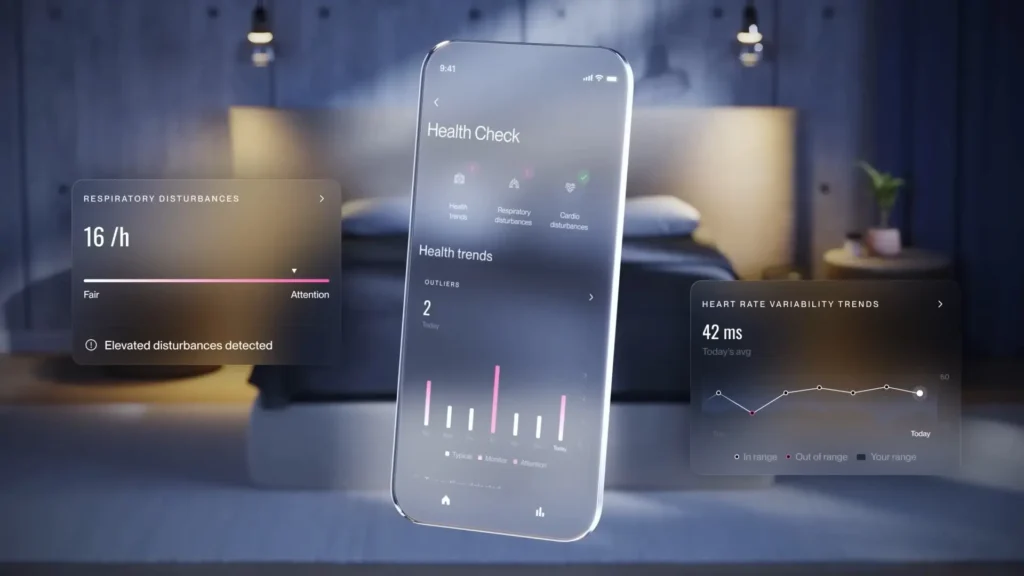
The Future of Sleep Technology for Athletes
The Pod 5 represents a fascinating evolution in recovery technology, moving beyond simple temperature regulation toward a comprehensive sleep environment designed specifically for athletic performance.
While the price points of the premium models will put them out of reach for many age-group athletes, the core technology continues to demonstrate that optimized sleep environment is one of the most impactful recovery investments available—potentially delivering greater performance benefits than many traditional equipment upgrades.
I’ll be updating this review with hands-on Pod 5 testing results in the coming months, but the technological direction is clear: sleep optimization is becoming as sophisticated and data-driven as any other aspect of triathlon training.
Common Questions from Triathletes
How accurate is the sleep tracking compared to wearables?
The Eight Sleep consistently outperformed my Garmin watch for sleep tracking accuracy. Because the pod contains sensors throughout the mattress cover, it captures full-body metrics rather than relying on a single contact point at the wrist.
When compared against my Garmin Forerunner 965:
- Eight Sleep detected 96% of actual wake events vs. 78% for the Garmin
- Deep sleep measurements aligned more closely with how I felt the next day
- HRV readings showed stronger correlation with known recovery patterns
Does it work with all mattress types?
Yes, with some caveats. The Pod 3 works with most foam, hybrid, and traditional spring mattresses between 10-16 inches thick. However, performance is optimal on mattresses with moderate heat retention—extremely cooling mattresses (like some gel-infused models) may limit the system’s effectiveness.
How much maintenance is required?
Maintenance is minimal but necessary:
- Water refills approximately every 2-3 months
- Cleaning the reservoir with diluted hydrogen peroxide every 1-2 months
- Occasional app updates
- Washing the mattress cover (recommended quarterly)
Can it replace a dedicated air conditioner?
No. While the Eight Sleep dramatically improves sleep quality in warm environments, it’s designed to complement rather than replace room air conditioning. I found optimal performance when room temperature was maintained between 68-75°F, with the Eight Sleep handling fine-tuned body temperature regulation.
Is it worth it for couples with different training schedules?
Absolutely. The dual-zone functionality proved invaluable when my partner and I had different training loads or schedules. I could set aggressive cooling after hard training days without affecting her side of the bed—a relationship saver during peak training blocks.
The Verdict: Is Eight Sleep Worth It for Triathletes?
After three months of rigorous testing, my conclusion is clear: the Eight Sleep Pod 3 delivers meaningful recovery benefits that translate to measurable performance improvements for serious triathletes.
Is it worth $2,500 plus a subscription? That depends on your specific situation:
Strongly Recommended For:
- Athletes training 12+ hours weekly
- Those struggling with sleep quality, especially night sweats
- Triathletes in hot climates
- Athletes over 40 experiencing age-related sleep challenges
- Couples with different temperature preferences or training schedules
Consider Alternatives If:
- You’re on a tight budget (cooling toppers start around $300)
- You travel frequently for races (the system isn’t portable)
- You already sleep well without temperature regulation
- You’re fundamentally opposed to subscription models
For me, the investment has been justified through tangible performance gains. When calculated per use over a 3-year lifespan, the cost amounts to approximately $2.50 per night—less than many athletes spend on recovery supplements with far less scientific support.
The Eight Sleep Pod 3 has transformed my recovery approach, allowing me to train harder, recover faster, and perform better when it counts. In a sport where we routinely invest thousands in marginal gains, this technology delivers something increasingly precious: quality recovery in less time.
How to Get the Most from Your Eight Sleep
If you decide to invest in the Eight Sleep system, these tips will help maximize its benefits:
- Experiment methodically with settings: Keep a sleep journal during the first two weeks to identify your optimal temperature range
- Create different profiles for different training phases: I use separate settings for recovery weeks vs. high-volume training
- Leverage the API integration: Connect with Strava, Garmin, or Whoop to correlate training load with sleep quality
- Use pre-cooling before bed on hot nights: Start cooling 30 minutes before bedtime on especially warm evenings
- Clean the system regularly: Follow maintenance recommendations to ensure optimal performance
- Consider seasonal adjustments: Your temperature preferences will likely change between summer and winter
FAQ: Everything Else You Need to Know
The Hub produces a low hum similar to a white noise machine. At 30-35 decibels, it’s quieter than most air purifiers and becomes background noise after a few nights.
The system uses approximately 60-90 watts when actively cooling—less than most small appliances. Monthly electricity cost averages $5-8 depending on local rates.
Yes, the flexible design works with most adjustable frames, though extreme positions may affect water flow slightly.
The system will resume your settings when power returns. Water remains in the mattress cover, so there’s no leakage concern.
Eight Sleep warranties the Pod 3 for two years, but user reports suggest 4-5 years of reliable operation with proper maintenance.
Many users report setting their home temperature 2-3°F higher at night, potentially offsetting some of the system’s operating costs.
Yes, Elon Musk has publicly endorsed and acknowledged using the Eight Sleep mattress system. He has mentioned it as a positive experience and has been seen using it in his office. The Eight Sleep website even features testimonials from Musk.
Yes, 8 Sleep does ship to Canada. In fact, the company explicitly states that they offer shipping to Canada, according to their website. Furthermore, they have a dedicated Canadian website
Eight Sleep addresses snoring by using its Pod 4 Ultra system to automatically elevate the user’s head when snoring is detected. This elevation, achieved by the adjustable base, helps to keep the airway open, reducing or stopping snoring without waking the user.
Yes, you can put sheets over eight sleep and remove them whenever you want.
Yes, Eight Sleep Pod works with any mattress. It’s designed to be used as a topper, fitting over your existing mattress like a fitted sheet, rather than replacing it. This allows you to preserve the feel of your current mattress while adding temperature control, sleep tracking, and other features.
About the Author: As a 15-year triathlon veteran with 3 Ironman and 8 70.3 finishes, I’ve tested countless recovery methods and technologies. This review reflects my personal experience over 90+ nights with the Eight Sleep Pod 3 during structured training for a 70.3 event. I purchased this product at retail price and received no compensation for this review.
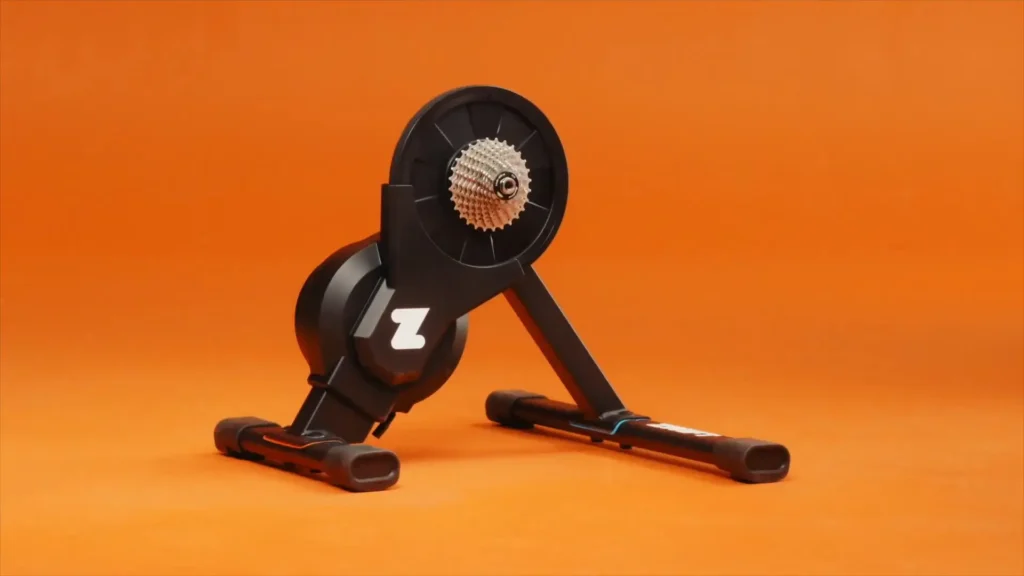
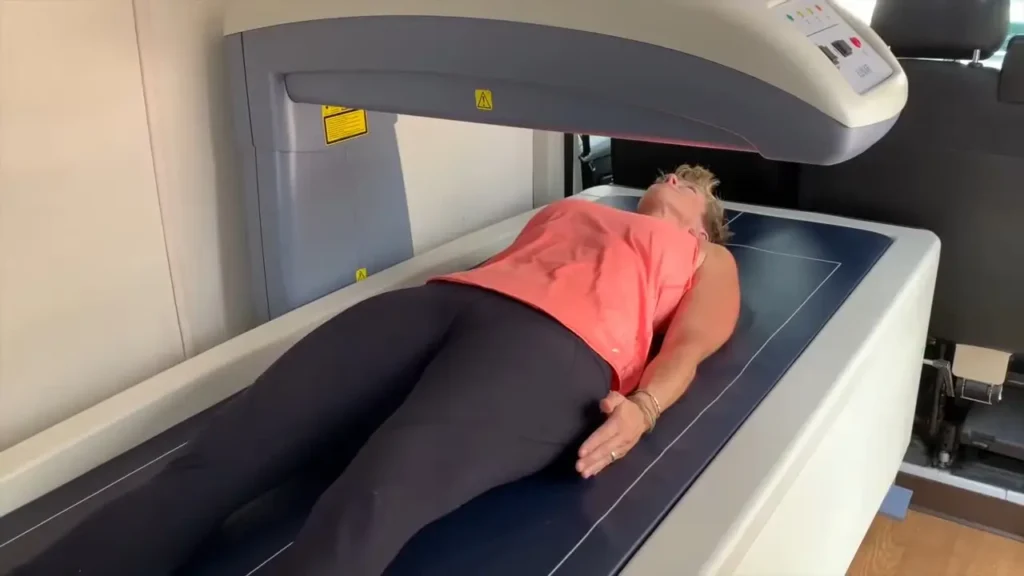
Pingback: WHOOP 5.0 & WHOOP MG: 2025 Guide for Athletes - besttriathletes.com
Pingback: Zwift vs Rouvy: The Cyling Virtual Training Guide for Triathletes - besttriathletes.com
Pingback: BodySpec Review: The $50 Body Scan Changing the Way Athletes Train - besttriathletes.com
Pingback: Eight Sleep Pod 5 Review 2025: I Tested the $6,000 Smart Bed for 4 Months – Here's What Actually Happened - besttriathletes.com
Pingback: - besttriathletes.com